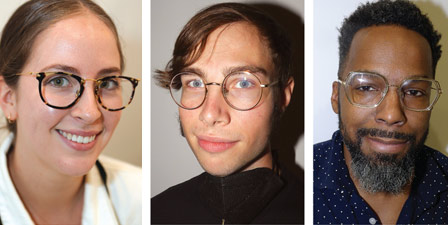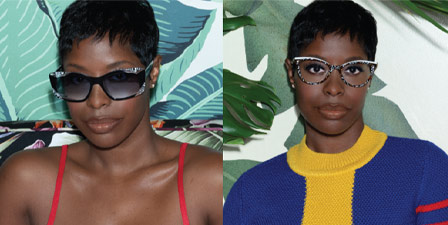
By Samantha Ramcharran, A.S.
Insisting on an inexpensive backup pair is non-negotiable when I am with a patient. Rarely will anyone argue that it is an unnecessary or inconvenient investment. This is a critical conversation to have with everyday eyeglass wearers because they know they have nothing else to see with if something happens. Patients will ask if they can use their old pair, but that decision is subjective and should be discussed with an optician. If the prescription did not change and the quality of their current pair is decent, then it’s acceptable to use them unless they want to update their style. However, if the prescription did change, my answer is usually no. Once the patient gets used to the new prescription, they really shouldn’t be using an old one. I’m sure they will ask, “why not,” and I’ll explain that if they lose or break their new pair, they will be stuck working, reading, driving, etc. with their old glasses that are no longer tailored to their eyes. Some optical shops can manufacture glasses on site with same or next day service, but that can be unreliable if they don’t stock the patient’s lenses or they are closed. Let’s say a patient works in front of a computer daily but, unfortunately, lost their progressive pair and don’t own backups. Now they can’t see comfortably because they are straining their eyes, and this can last up to a week if immediate service is unavailable. It is our job to outline how advantageous having that second pair will be. People generally don’t think about having a contingency plan for their vision.
What is the most effective method to persuade and sell additional pairs? I find the most convincing times to suggest a backup pair is the very beginning of a sale and during an adjustment or repair. While patients are looking at frames, I will stay with them, show them several frames and suggest we keep our options open. Adjustments and repairs are an excellent opportunity to advise another set of glasses. I ask questions about what had happened before I adjust the glasses to get an idea if there was serious impact involved or just a routine tightening. If it’s beyond repair, they usually are convinced to add a second pair to the replacement. During dispensing, I love celebrating their new pair and exploring what their backup pair is. Mentioning travel or losing glasses is effective when suggesting additional pairs. They usually end up walking out with a quote or choosing another set of frames, and either way, I know I have fulfilled my job.
Contact lens wearers must have an alternative if they lose a contact lens or contract an eye infection. Recommend that they rest their eyes from their contacts and wear their glasses instead. Most people don’t understand the importance of having that pair of glasses to lounge around with until they have a problem.
When patients purchase multiple pairs, the business thrives along with its reputation. We earn patient loyalty and trust by sharing our expertise and insight by offering prescription sunglasses or extra pairs. Patients should not have to suffer because we failed to offer an emergency set of glasses. Not everyone will prepare themselves, but they will appreciate the advice. You’ll have a customer for life when they walk into your optical and they remember the service you provided! Learn more about recommending multiple pairs and providing excellent patient service with our CE, Engineering an Experience, at 2020mag.com/ce.













